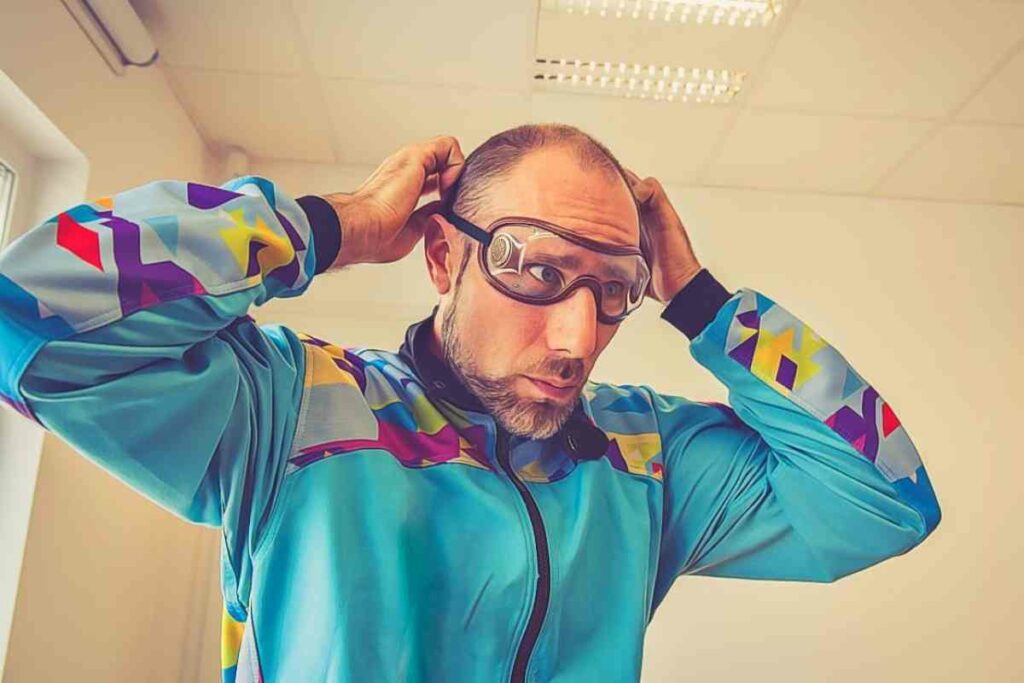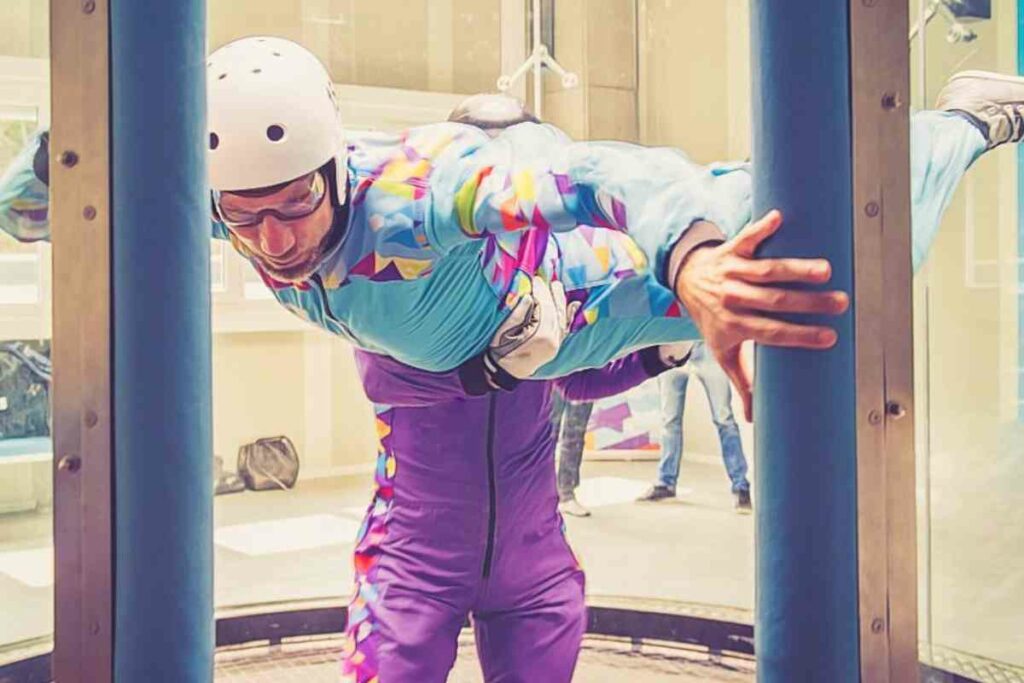Have you ever wanted to feel the rush of skydiving but been deterred by health concerns? If high blood pressure is an issue, fear not.
Indoor skydiving offers a thrilling option for those with cardiovascular limitations.
Here’s what you need to know about taking the plunge in a controlled environment that’s just as exhilarating as free-falling from thousands of feet up.
Can You Indoor Skydive With High Blood Pressure?
Indoor skydiving can be safe for individuals with well-controlled high blood pressure, but those with poorly controlled hypertension or associated symptoms should avoid it.
Consulting with a physician and following lifestyle changes are crucial for managing hypertension and ensuring cardiovascular health when considering physical activities like indoor skydiving.
High blood pressure, also known as hypertension, occurs when there is an abnormally high amount of force being applied against the walls of the arteries as blood flows through them.
Read before you go – Can You Indoor Skydive If You Have a Medical Condition?
This puts undue stress on various organs and can lead to serious complications such as:
- Dizziness
- Heart attack
- Stroke
For individuals with well-controlled hypertension (that are taking medications and have their blood pressure in check) who are not experiencing any significant symptoms, indoor skydiving should be safe.
However, those with poorly controlled high blood pressure or any associated conditions such as chest pain or shortness of breath should avoid this activity altogether.
Effects of Indoor Skydiving on Blood Pressure
Indoor skydiving is an exciting and thrilling experience that more and more individuals are eager to try.
However, one thing you need to watch out for when doing this activity is the effects it has on blood pressure.
When we are in freefall, whether indoors or outdoors, our heart rate increases due to adrenaline pumping through our veins.
This increase in heart rate can cause a spike in blood pressure as well. In some cases, people with pre-existing high blood pressure may be at further risk of experiencing adverse health effects.
It’s essential to monitor your blood pressure before engaging in indoor skydiving activities.
If you have any concerns about your current health status or medical conditions affecting your ability to participate safely in this sport, contact a physician beforehand.
Additionally, it’s critical not to push yourself too hard during these activities. Take breaks when needed and stay hydrated throughout the experience.
Keep in mind that indoor skydiving should always be done under proper supervision from trained professionals who follow safety protocols strictly.
Moreover, if you begin experiencing headaches or lightheadedness while participating in the event: stop immediately!
Considerations For Individuals With High Blood Pressure Before Indoor Skydiving
Indoor skydiving can be an exciting and thrilling experience, but for individuals with high blood pressure, there are a few considerations to keep in mind before taking part in this activity.
Here are some things to consider:
Check with your doctor
Before participating in any physical activity, it is important to consult with your doctor if you have high blood pressure. Your doctor can advise you on whether or not indoor skydiving is safe for you.
Monitor your blood pressure
It’s important to keep track of your blood pressure levels regularly, especially before engaging in physical activities like indoor skydiving. Make sure that your blood pressure is within the range recommended by your physician.
Stay hydrated
Dehydration can cause an increase in heart rate and higher blood pressure readings. Drink plenty of water before and after indoor skydiving to ensure that you stay hydrated.
Curious about indoor skydiving? Our comprehensive guide will provide valuable insights, tips, and tricks to help you become a confident flyer in no time.
Avoid stimulants
Stimulants like caffeine or energy drinks can increase heart rate and might cause temporary spikes in blood pressure levels, which could be dangerous during these kinds of activities.
Don’t hold breaths
Holding breaths while flying inside the tunnel will create more significant changes in physiological response as well as trigger a temporary spike above average values of elevated systolic readings among hypertensive individuals.
Make sure to breathe normally throughout the indoor skydiving experience.
Recognize your limits
Indoor skydiving can be an intense activity, and it’s essential to recognize your physical limitations. Take breaks if necessary and listen to your body.
In Conclusion
Indoor skydiving is a thrilling experience that can be enjoyed by individuals with high blood pressure.
With proper precautions and guidance from trained instructors, everyone can enjoy the rush of feeling weightless and soaring through the air inside a simulated wind tunnel.
Don’t let your condition hold you back from this unforgettable adventure!







